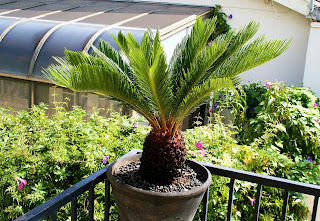The sago palm is often widely used in landscaping. It can be propagated by cuttings suckers. The palm can be grown on common ground. Especially soil is slightly sandy loam. It’s like the medium moist and sun all day. Cycas revolute is easy care. It grew slowly, but it still grew faster than other cycads in its family.
Friday, August 3, 2012
Sago palm planting
The sago palm is often widely used in landscaping. It can be propagated by cuttings suckers. The palm can be grown on common ground. Especially soil is slightly sandy loam. It’s like the medium moist and sun all day. Cycas revolute is easy care. It grew slowly, but it still grew faster than other cycads in its family.
Wednesday, August 1, 2012
The botanical characteristics of sago palm
Trunk of the sago palm (Cycas revoluta)
Plant has seed and small bush. Sago palm Leaves (Cycas revoluta) Its leaves look like feathers, length 60-180 cm tightly clustered at the top. Leaves look curls and it is covered with hair similar wool. Sub leaves are a lot, long and narrow, wide 0.5 mm and long 2.5 to 6 mm. Apical of sub leaves are sharp similar to thorns. It has dark green and shiny. The leaves of palm are rolled down. A petiole is rigid, long 9-10 cm. It is a square with short spikes.Flower of the sago palm (Cycas revoluta)
The sago palm has separate reproductive organs in each tree.- Male reproductive organs are a tight cluster, cylindricalม wide 9-10 cm and length 30 cm. It is consists sheath that is stacked on the base of the leaf sheath. The palm will be part used for breeding as a group. When it's older, it will be blown away like stamens.
- Female reproductive organs It's long 10-23 cm. It consists sheath sort of overlap, the top sheath is oval, edge deep notches with brown hair. The lower part is stem and has eggs attached to the 1-2 pair.
Fruit of sago palm (Cycas revoluta)
Fruits are circular, no meat, diameter 3 cm, when ripe is red.
Subscribe to:
Posts (Atom)






